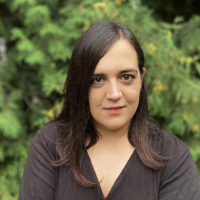Hossain Soki Walladi used to say he was born twice. The first time in Chad, a country whose regime killed his father and brother, and threw him in jail. The second time in Sweden, where he tried to build a new life. Soki was fifteen when military forces invaded his village and took him to the police station. They demanded he reveal to them the whereabouts of members of his immediate family, who were supporters of the local resistance movement. “Since I couldn’t answer their questions, they brutalised me. They beat me, put out cigarettes on my body and cut me with jagged cans and bottles,” Soki testified. After eight months of torture, he was released, only to learn that his elder brother and father had been liquidated. His mother soon passed away, and once he had provided for her funeral he fled to Libya, from where he set out for Europe by boat in 2001. When Soki arrived in Boden in northern Sweden and applied for asylum, he was seventeen. But the Swedish migration system treated him as an adult.
“This practice used to be common in our country. The Swedish authorities simply ignored what it said on Soki’s birth certificate, the only document he possessed. Also, they could not find anyone who knew the language of his tribe, so they presented him a document stating that he spoke Swahili and Arabic. Since he was illiterate and terrified, he signed it without question. That mistake meant he was labelled unreliable, and it dogged him to the very end,” says Soki’s longtime friend Anna in an interview with the Novosti weekly. She met Soki at the Red Cross in Boden, where he and her mother both worked as volunteers.
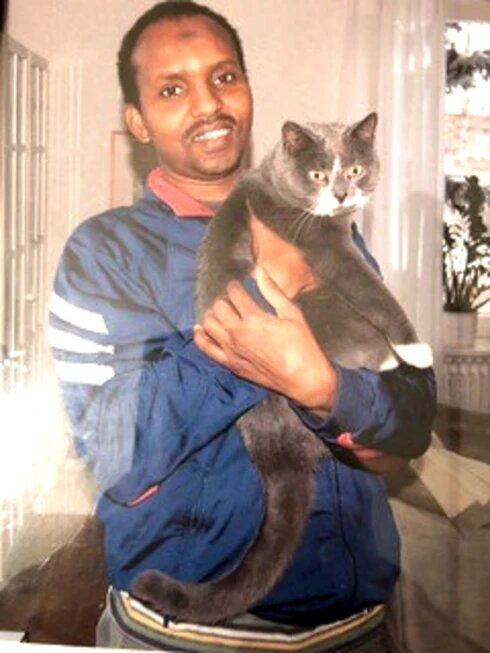
Hossain Soki Walladi 1984 – 2020. (Photo: Privatna archive)
In the following years, he learned to write and speak Swedish with the help of a local teacher, adopted a cat, Nisa, and made a wide circle of friends, with whom he travelled the whole country. He volunteered for a time as a mobility assistant for special-needs people and with the Boden municipality. Since he was popular with the clients, his supervisor once accompanied him to the migration office to help him at least obtain a work permit. But all efforts were in vain because the competent court repeatedly rejected Soki’s asylum application. At the same time, his native Chad denied him permission to return to the country. And so things continued until January 2018, when he was detained and then deported to central Africa.
“After so many years in Sweden, that was an extremely traumatic experience for Soki and all of us who knew him,” says Anna, who stayed in touch with her longtime friend.
He called her once a month, and whenever she would ask him how he was doing in Chad, he answered tersely. They last heard from each other two years ago.
“As usual, he wanted me to tell him about my family and his other friends. We reminisced about amusing situations and ended the conversation laughing. He never once told me he was on the way back to Europe. Not once. Probably he didn’t want us to worry. That’s why I got a terrible shock a few months later, when the Swedish police called and asked if I knew anyone called Soki. A person with that name on a credit card was found dead in Croatia,” adds Anna, who went on to assist the Croatian Ministry of the Interior (MUP), through Interpol, in the process of identifying the victim.
Soki Walladi’s body was pulled from the River Korana in Pavlovac, near the town of Slunj, on 28 June 2020. Although almost all the circumstances of his death remain unknown to this day, it can be assumed that he drowned after crossing into Croatia from Velika Kladuša (Bosnia-Herzegovina); presumably he aimed to return via Slovenia to the west of the European Union.
“In Boden, we still can’t believe that this happened. We often talk about him, and we miss him immensely. His small hands that made coffee and food for us, his big brown eyes, his smiles, and the affection he lavished on us,” Anna remembers her friend, whose body is buried in Skakavac, 3,000 kilometres away.
We soon found Soki’s grave at the cemetery of that village near Karlovac. Although located at the very edge of the cemetery, it can hardly be overlooked. It is covered by a mound of earth, with two tall, Islamic-style wooden grave markers protruding. The brown one has a small plaque nailed to it, with the designation 1-9-1C: here Ait and Rachid, two Moroccans whose bodies were found in the River Mrežnica in the summer of 2020, are buried beside Soki. The grave next to theirs, with the green marker and the designation 1-9-1A, is the final resting place of four more young men: Alifrom Bangladesh, Ratib from Syria, Yasser from Morocco and Eslam from Egypt. Their graves are the only ones in that part of the cemetery where there are neither flowers nor candles.
Although the crime pages of the local media and the official statistics of institutions typically treat their deaths as coincidental accidents, all seven are victims of the ruthless European migration policy that made it impossible for them to safely travel to western Europe in search of a better life, friends or relatives. This policy has criminalised those like Soki Walladi, who for various reasons, most often connected to war, were never able to obtain the necessary documents, labelling them as illegal migrants. It has also placed physical obstacles in their way – razor wire, border fences metres high, armed police patrols – and thus de facto deprived them of the right of free movement and access to international protection. In other words, it channelled them towards inaccessible border crossings, into a deadly path criss-crossed by rivers, seas, mountains, cliffs, railway tracks and minefields.

The grave of an unidentified person in Popović Brdo (Photo: Selma Banich)
Since early 2017, when the EU abruptly changed its policy towards refugees from the Near and Middle East, at least sixty-two migrants have died on the territory of Croatia: thirty-seven drowned, nine froze to death, five died in traffic accidents, two were hit by trains, two died from pulmonary oedema or lung failure, and the same number from natural causes. One person each died from falling into a cave or from a height, from an electric shock and from a land mine. In one case – a man who died this year – an autopsy has yet to be performed, so the cause of death is still unknown. In the same five-year period, a total of 140 migrants were injured, fifty-seven of them seriously and eighty-three slightly, according to the response we received from the MUP, which noted that the statistics relate to “third-country nationals who entered the Republic of Croatia illegally via the EU’s external borders and are staying in the country without permit”.
The largest number of migrants died in the Karlovac and Primorje-Gorski Kotar counties, but deaths have also been recorded in the counties of Osijek-Baranja, Vukovar-Srijem, Sisak-Moslavina, Lika-Senj, Brod-Posavina and Istria. Since their bodies are most often buried in the local cemeteries closest to the place of death, the graves are dotted through the villages around Otok, Novska, Karlovac, Duga Resa, Ozlje, Ogulin, etc. Only a few have been exhumed and returned to their country of origin, be it because some of the deceased have no family left or its members are scattered all over the world due to armed conflicts, be it because of the complex and expensive process, which, depending on the distance and the local bureaucracy, comes with a price tag of up to several thousand euros.
In the greater Karlovac area alone, where the municipal service company Zelenilo Ltd takes care of burials, thirteen migrants have been buried since January 2018. Their graves were visited by researchers involved in the project European Irregularized Migration Regime at the Periphery of the EU (ERIM). Marijana Hameršak, senior associate at the Institute of Ethnology and Folklore Research and project manager, invited artist and activist Selma Banich to join them.
“The usual practice in Karlovac County is for the names of the victims not to be indicated on the graves, even when their identities have been established. Almost all the graves are decontextualised – meaning they give no information about where the deceased came from, when they were born or how they died – and it was terrifying to realise that these people had been hounded in various ways until their death. They did not have the right to free movement, access to the asylum system and the freedom to choose the place and circumstances in which to live their lives,” Banich says and stresses that it takes their death to fundamentally change the attitude of the regime and its institutions.
“Hospitals, pathology departments, service companies, police and embassies then start dealing with their corpses, which are buried in the same ground they were chased from prior to their deaths. This is pure hypocrisy of this country, the European regime of migration control, capitalism and colonialism,” she adds.
Their first visit to the cemetery in Skakavac was quite a shock, Selma Banich says, because they were not at all certain if something was a grave or a ditch, nor how many people were buried in each. This was one of the reasons for initiating a public commemorative gesture, which resulted in the creation of “The Passage/Prijelaz”, a memorial canvas with thirty-six portraits of people who died on their migrant journey through the Balkans. Artists, social scientists, activists and other members of the Women to Women collective and the ERIM project took part in making it.
“We wanted this type of decolonial practice – a process of public mourning – to enable the local community to realise the brutality of the oppressive migration regime and oppose it,” Banich explains.
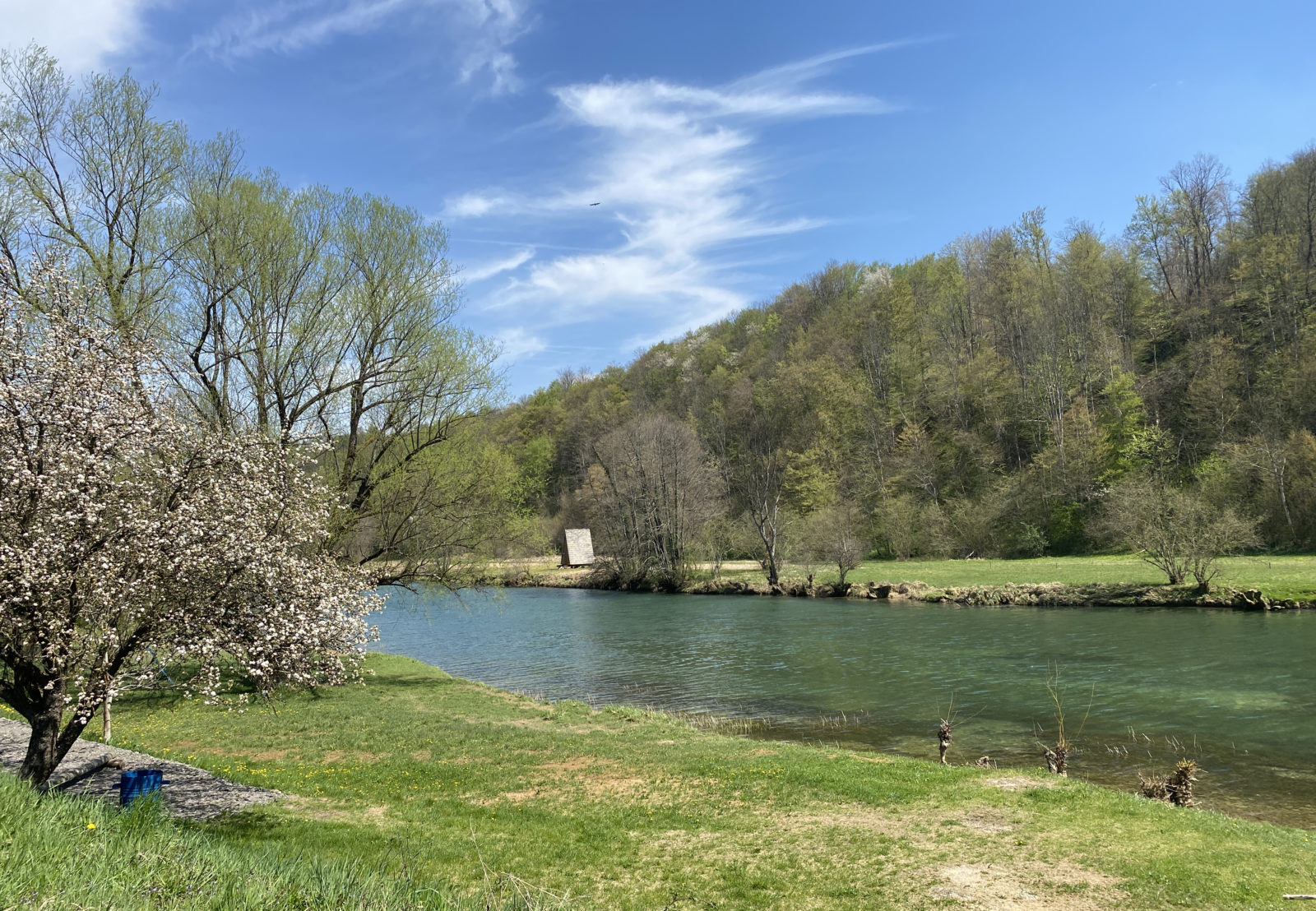
Most of the migrants died in the rivers – Dobra (Photo: Tamara Opačić)
At the same time, the MUP emphasises that the Croatian police “undertakes all in its power to save migrants in dangerous situations. […] The activities of the police to intensify the surveillance of the Croatian borders and prevent the operations of organised criminal groups do not extend exclusively to preventing illegal migration and maintaining favourable security conditions at the state border, but to protecting the lives and safety of all persons, including those who attempt to enter Croatian territory illegally,” it said in reply Novosti. The MUP also boasted of there being “too many cases to count, where the Croatian police rescued migrants whose lives were endangered by deep snow and hypothermia, by travelling in impassable mountains without proper equipment, or by injuries sustained by falling from rocks, or who had to be pulled from a river because the rugged nature of the terrain prevented them from getting out themselves – cases that have been covered by the media”.
However, Selma Banich recalls that many deaths of people on the move are a direct result of pushbacks, i.e. forceful deportations, as was the case with Madina Hussiny, a girl who was hit and killed by a train in late 2017 just after the Croatian police had forced her and her family back towards Serbia. Testimonies gathered by activists of the Border Violence Monitoring Network (BVMN) show that a large number of forcible and illegal expulsions, an estimated fifty percent of them, are carried out by the Croatian police who force refugees to enter rivers and then walk or swim back to the border of Croatia and Bosnia-Herzegovina. According to the BVMN report for 2021, such practices are most common around the village of Šturlić near Cazin, where the River Korana forms the Croatian-Bosnian border. In testimony heard in spring of 2021, five underage Afghans confirmed that the Croatian police had expelled them at that location. After apprehending the youths on Croatian territory and taking them by van to the riverbank, they ordered them to lie on their stomachs and started beating them on the legs with sticks. They then forced them to cross the border through the river, which was too deep in that part, so they had to swim. “Some people have already drowned in that spot, and there were weak swimmers among us, but we had to jump into the water so they’d stop beating us. It was terrible,” one victim of the pushback described.
“I can say from experience that the Croatian institutions are absolutely in the service of the migration regime of the European Union and its member states, which bears all the hallmarks of modern fascism. Croatia, which is currently assigned the role of guarding the area between Schengen and the EU’s external border, carries out only part of the tasks of this complex system. The problems for people on the move neither begin nor end here. The root problem is a political one: the exploitation of entire communities and resources in their countries of origin, which is why they are literally forced to flee from poverty and wars – wars ironically financed, in part, by the budget of the EU,” Banich says.
“Even if they succeed in reaching western Europe, where many of these people have family members and friends, they are made to live in a tangle of permits: residence permits, work visas and other restrictions. Most often, they are exploited as cheap labour – modern slaves who pick fruit and vegetables for our supermarket shelves,” the artist adds.

Portrait of Ahmad Kahlil Ibrahim created as part of the artistic-activist project “The Passage”
Statistics of the Missing Migrants Project, an initiative backed by the International Organisation for Migration (IOM), confirm that the murderous policies of the migration regime, compounded by the media and public’s lack of concern for the deaths of people who left their homes in search of safety, are not a characteristic of Croatia alone. Since 2014, 48,231 refugee deaths have been recorded worldwide, or at least sixteen every day. And this is a very low estimate because many bodies are never found, especially of those who drown in the Mediterranean, the mass grave of our age, in which at least 2,048 people died in 2021. European rivers, from the Marica to the Drina, Korana and Kupa, are becoming more and more deadly in recent years since the formal closure of the so-called Balkan refugee route. The IOM points out that the indifference of governments, and the resulting insufficient allocation of funds for finding and identifying bodies, is one of the key problems.
The MUP explains that this is a complex process in which several different institutions are involved, in the case of Croatia. “When a dead person is found, the police conduct an investigation, after which the body is transported to the Clinical Institute of Pathology and Forensic Medicine. A forensic examination is then conducted to determine the cause of death and the particular injuries, and the competent public prosecutor’s office is informed of the incident,” the police replied to us. The identity is determined by finding personal documents, by the people who reported the disappearance recognising the body, and by conducting dactyloscopic and DNA analyses. “In cases where data on the dead person’s citizenship is available, the Ministry of Foreign and European Affairs informs the foreign diplomatic and consular mission in Croatia, which participates in the further procedure, both in terms of notifying the family and arranging for the body to be returned. If the identity cannot be determined by the procedures mentioned, the body is kept at the forensic facility until identification is achieved,” the MUP stated. It added that, according to the data available to the border police, the identity of fourteen people who died on Croatian territory has yet to be established.
This figure would be even higher if part of the work, which should normally be done by state institutions, were not taken on by volunteers and activists who help refugees and their relatives. Information and photographs, which are crucial for finding missing persons and identifying the deceased, are most often shared through social media. In the Balkan context, the largest community is the Facebook group “Dead and Missing in the Balkans”. In one of the most recent posts, a girl from Serbia asks for news about Seif, a thirty-year-old man from Tunisia. “He disappeared somewhere between Serbia and Bosnia. He last called his family on 14 May 2019. He has a tattoo on his arm. If you have any information, please contact me via my inbox,” it says under a photo of the young man.
One such initiative allowed the identity of Ahmad Kahlil Ibrahim to be ascertained and his grave to be found. The whole life of that Palestinian was marked by war, exile and suffering. He was born in Syria, where his family had fled during the Arab-Israeli conflict. Ahmad worked as an electrician in his new home, Damascus, and started a family. But another war began, and their house was razed to the ground in 2013, so thirty-three-year-old Ahmad and his wife Rabah fled to Beirut with their three children. Due to the extreme poverty in which they lived in one of the Lebanese refugee camps, Ahmad left in the summer of 2017 for Germany, where two of his cousins live. It took him a year to reach the Bosnian-Croatian border, where he was expelled by the Croatian police. Ahmad’s next crack at the game (an attempt to cross the border) proved fatal. At the end of 2018, his body was found in the River Dobra, in the municipality of Generalski Stol. Since he had no documents with him, he was buried in the local cemetery in Lipa under the designation “Unknown male”.
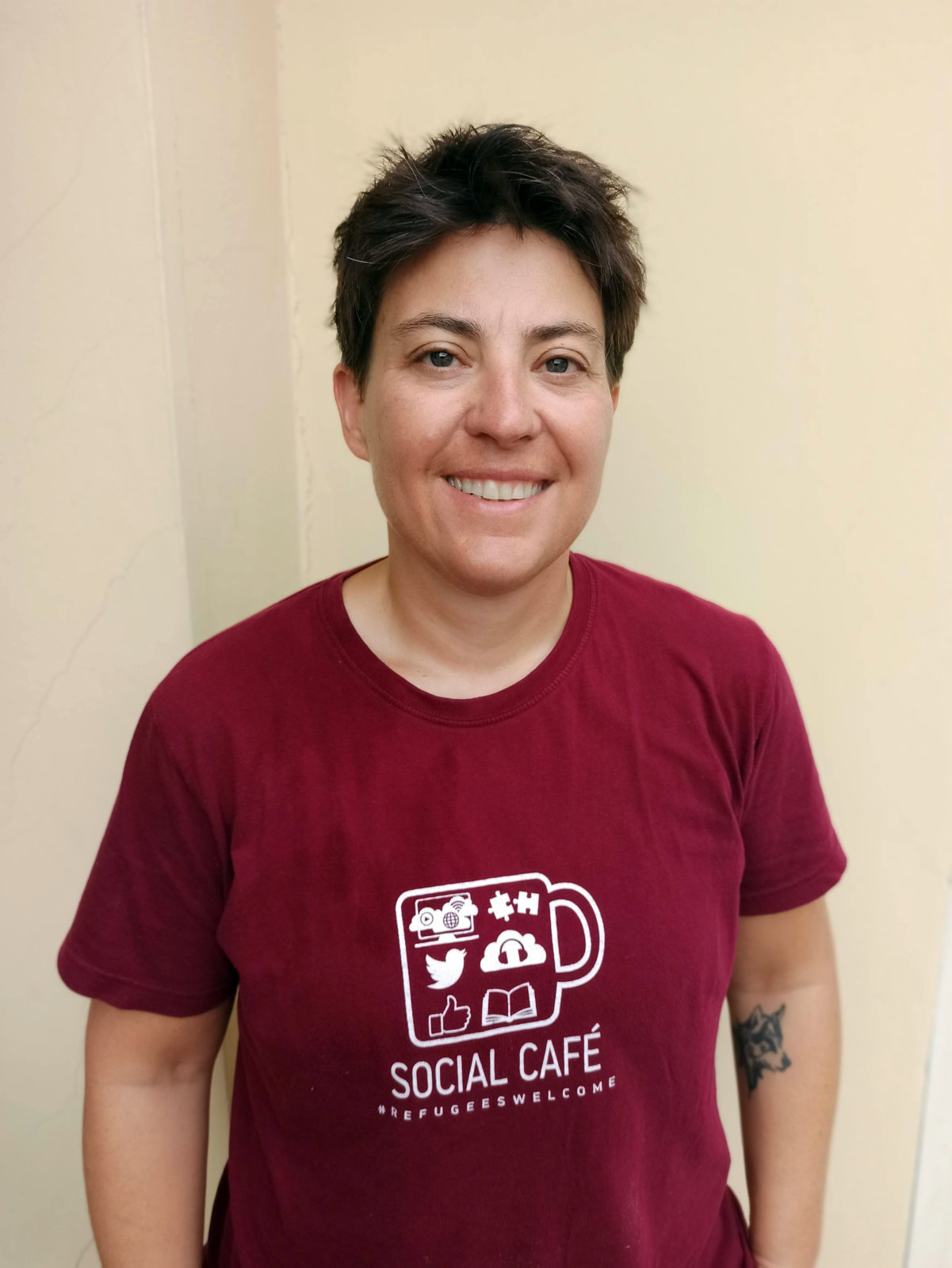
Silvia Maraone (Photo: Privatna archive)
It probably would have remained that way, had not Silvia Maraone from the Italian non-governmental humanitarian organisation IPSIA (Institute for Peace, Development and Innovation) joined in the story. IPSIA has been present in the countries of former Yugoslavia since the late 1990s. Since the outbreak of the refugee crisis, Maraone has been active along the Balkan route, and in addition to providing direct psychosocial assistance she has helped refugees by publishing useful information on her blog. At the end of 2018, she shared information on people dead and missing in the Balkans. That is why, several months later, she was contacted by Ahmad’s relatives, who asked her to help.
“Since I had no information about the man, I didn’t know what to do. But at the same time, I wanted to help – I guess I thought everything would go smoothly,” Silvia Maraone recalls, who immersed herself in the case in January 2019.
She soon found an item on a local news website about a missing migrant who had fallen into the river near the Skubin Waterfall, and then she contacted several institutions on behalf of Ahmad’s family: the mountain rescue service, the Karlovac police and the Syrian consulate in Zagreb. After the body of a yet unidentified man was found in the River Dobra, she mediated in conducting a DNA analysis, and at the same time she comforted the family of the deceased, who were receiving contradictory information.
“The Red Cross joined in and supported Ahmad’s cousin from Germany in coming to Croatia and giving a blood sample. The victim’s identity was soon confirmed, but another important question still had to be answered: where was Ahmad’s body? A year later, we found out he was buried in Lipa,” Silvia tells us.
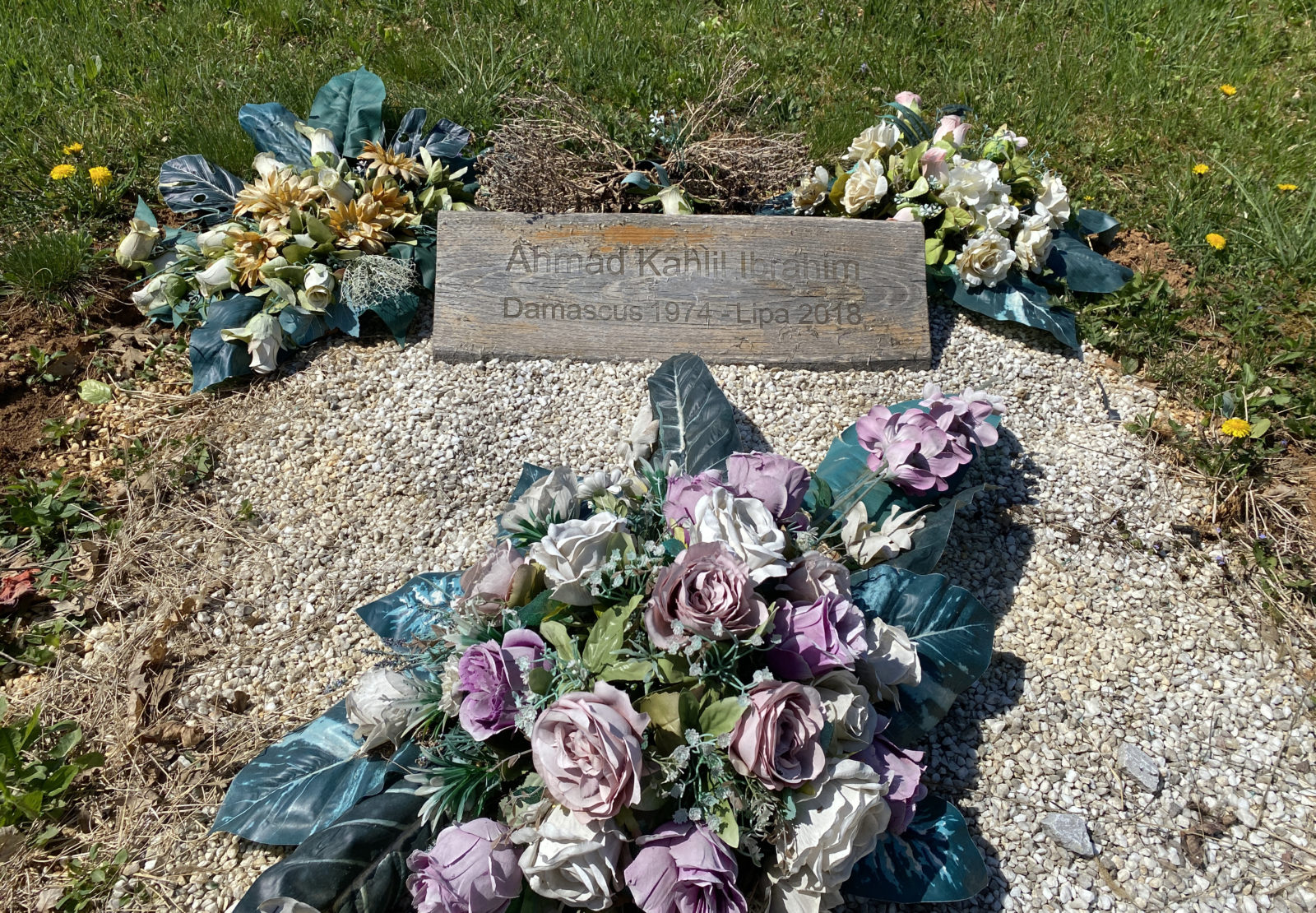
The grave of Ahmad Kahlil Ibrahim in Lipa (Photo: Tamara Opačić)
Shortly before the corona pandemic began and the borders were sealed, the Italian aid worker went to that village near Duga Resa, but since Ahmad’s grave was unmarked she was unable to find it. Since it was a Sunday, she went to a nearby church, waited until the end of mass and spoke to the priest.
“A woman, Valentina, soon joined us. She was the most diligent person I could find in that strange place and in this whole chaotic story. As a nurse who had once worked as a volunteer in Syria, she was extremely empathetic. She took me to the grave, which had a cross on it, so I asked her if there was any chance we could arrange it in accordance with Islamic tradition and add Ahmad’s name to it. Although his identity had been established months earlier, no one informed the local community, which went on to performed a wonderful gesture,” Silvia adds.
After Silvia’s visit, residents of Lipa and the surrounding villages set about rearranging Ahmad’s final resting place. They covered the bare earth with decorative pebbles, carved his name and surname, as well as the year and place of his birth and death, in a wooden board, and decorated it with flowers. Thus Ahmad Kahlil Ibrahim was given back at least a part of his dignity, which he was so cruelly divested of two years earlier at the ramparts of Fortress Europe.
Translated by Will Firth / Voxeurop.





